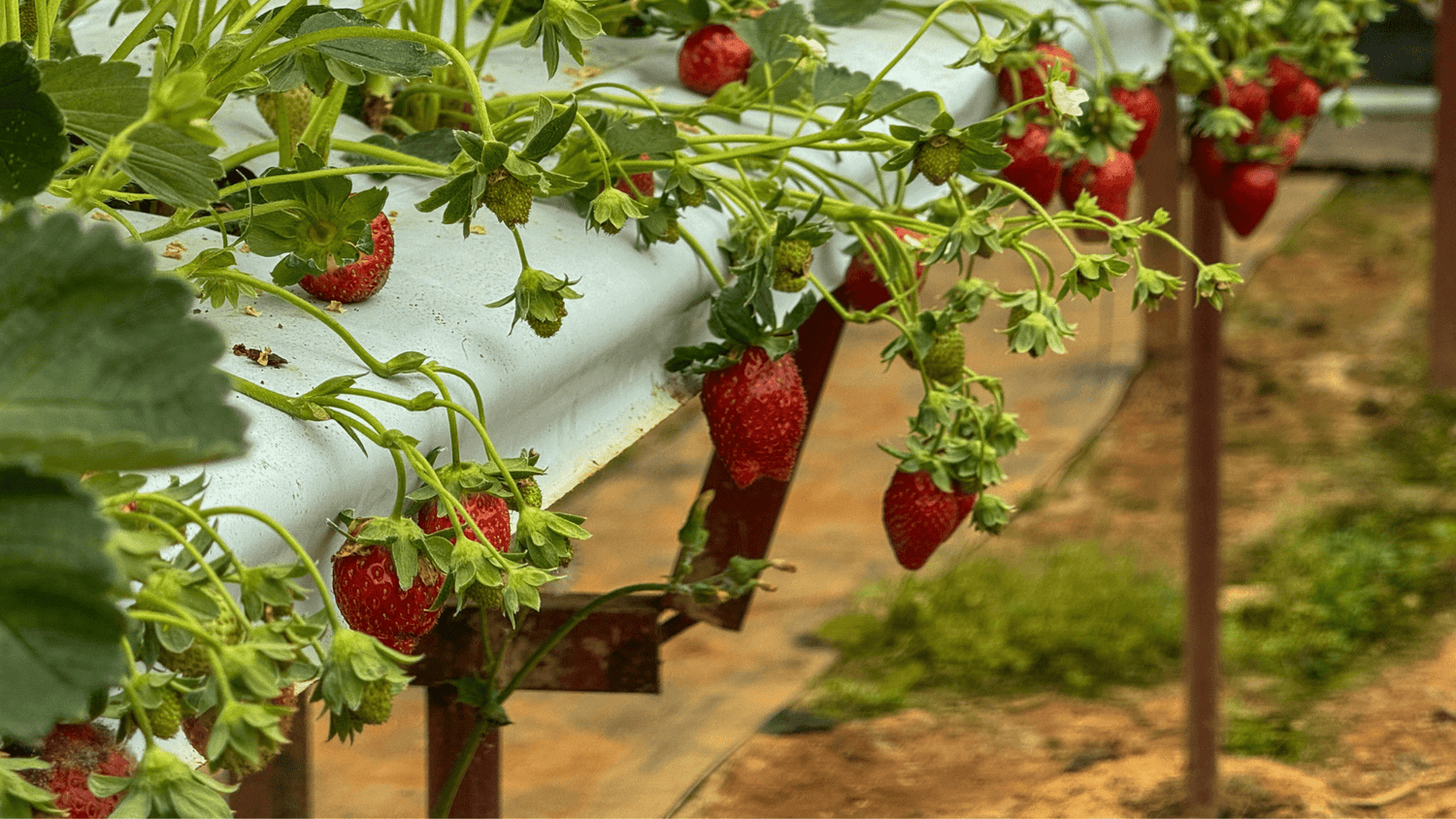Why birds are a major risk for berry crops
Soft fruit such as strawberries, blueberries, blackberries and boysenberries are highly attractive to birds because of their high sugar content, abundant availability and accessibility. Birds feeding on ripe or ripening fruit cause direct losses (fruit eaten or damaged) and indirect losses (secondary rots, dropped fruit, grading out).
Research shows bird predation can account for 10-20 % loss in blueberries.
Unlike some tree crops where access may be restricted, many berry crops are lower and more accessible to ground-feeding species and flocks.
This means growers must adopt a proactive, multi-layered bird-control approach.
Understand your crop and bird risk timing
Crop timing
For strawberries, bird pressure often begins as fruit starts to colour, ripe or nearing harvest. For blueberries, blackberries and boysenberries, bird pressure often escalates when fruit clusters become conspicuous and accessible.
Knowing the ripening window helps you deploy controls at the right time.
Bird species and behaviour
Different bird species adopt different feeding habits (ground feeding vs canopy, solitary vs flock). Growers should assess which species frequent their block, and where (edges, adjacent habitat, shelter belts). Bird pressure may increase in seasons or zones where alternate food or water is limited.
Risk-mapping and hotspot identification
Survey your block for “hot spots” where birds gather: field edges, near trees, near water or adjacent to non-cropped vegetation.
Map your ripening sequence: where strawberries or other berries are earliest, adjacent habitat may attract birds ahead of your harvest window.
Record past damage: noting location, bird species, time of day helps refine the plan.
Use this information to focus deterrent deployment and exclusion efforts where they will have most impact.
Tiered control measures for berries
Below is a structured strategy from early season through harvest. It combines proven exclusion tactics along with deterrents and management.
Early season (pre-ripening) – preparation
Install exclusion structures (netting, bird net frames) before fruit is exposed and vulnerable and ensure there is no damage/holes in existing netting where birds can enter.
Remove or reduce adjacent bird-attracting habitat where feasible (fallen fruit, water reservoirs, roost sites).
Train your team: harvesting early (where possible) and keeping blocks clean reduces the window of exposure.
Ripening window – active protection
When fruit begins to colour and the risk window opens:
Apply exclusion netting (if using)
Deploy visual and auditory deterrents: lasers, reflective tape, predator kites, bioacoustic units. Research shows combining visual + auditory methods delays habituation.
Harvest ripe fruit promptly and reduce hanging crop unless necessary: less fruit available = less attraction.
Peak harvest & post-harvest – reinforced control
Maintain deterrent rotations: shift device locations or change sound patterns so birds don’t habituate.
Continue exclusion until final berries are picked - some species of birds will arrive late in the season once other food sources drop off.
Clean up fallen fruit and maintain tidy block edges; spoiled or fallen fruit attracts birds and other pests.
Exclusion vs deterrent: making the choice
Studies repeatedly show that physical exclusion (netting) is the most reliable method for berry crops, when maintained and installed correctly.
It is important to be aware that as soon as there are any gaps or holes in netting, the birds will get in and it becomes a bird aviary. The birds will live and thrive within the netting structure as it provides food and shelter - their key requirements to survive.
Deterrents (visual, bioacoustics, lasers, etc.) supplement exclusion and can cover gaps (e.g., early ripening, edges). For some areas growers can rely solely on bird control units..
Growers should evaluate cost vs risk. For a crop like strawberries or blueberries with high unit value, investment in bird deterrents may pay off quickly.
Technology and smart solutions
Modern solutions include laser bird deterrents, predator-kite systems and bioacoustic units. These systems help automate the process and reduce labour as smart, set-and-forget systems reduce manual re-setting.
Read our guide for recommended bird control solutions for berry farms
Maintenance, monitoring & evaluation
Keep records: date when deterrents deployed, bird activity levels, fruit loss.
Monitor access gaps in netting: birds exploit even small openings quickly.
Rotate deterrents so that birds don’t habituate to a single stimulus.
At the end of the season review damage and cost of control, refine the plan for next season.
Budgeting and ROI considerations
While initial installation of netting, frames or advanced deterrent systems has cost, the improved yield, quality and reduced waste often pays off.
For example, in berry crops even a 5-10 % improvement in yield may cover the cost of deterrents (especially for higher-value crops). Growers should compare: cost of damage (lost fruit + increased labour to sort) vs cost of control.
Summary & action checklist
Map your risk: identify hotspots, bird species, timing of ripening.
Deploy exclusion early: especially for high-value berries (strawberry, blueberry, blackberry, boysenberry).
Use deterrents actively during ripening: rotation and combination of methods works best.
Monitor, maintain and adapt: keep netting intact, devices working, rotate patterns.
Evaluate cost vs benefit: track damage and control cost to refine next season’s plan.
By following this structured guide, berry growers can manage bird pressure more proactively, protect yield and increase overall profitability.
Whether you’re growing strawberries, blueberries, blackberries or boysenberries, this approach gives you a strong framework to build your bird-control plan.


